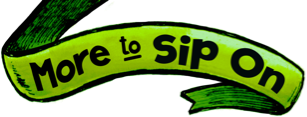Do you ever have a half-used carton of buttermilk and wonder what to do with it? It seems like recipes call for it, but you always have a little left over. What is buttermilk and why is it so good for baking and our health?
Buttermilk Basics
Many people think buttermilk is high in fat, when actually the opposite is true. Buttermilk originated as a by-product of butter churning, and today's cartons are filled with low-fat milk and active cultures. When the acids in buttermilk combine with baking soda, bubbling ensues and cancels out the sourness buttermilk is known for. We have buttermilk to thank for fluffy pancakes and flaky biscuits — and it adds creaminess and tang to savory dishes as well! Use it to tenderize meat, add moisture to baked goods and add creaminess to sauces and soups.
Nutrition Spotlight
When you pour buttermilk into your pancake batter, you can be confident that it adds nutrition and yumminess for the whole family. Buttermilk supplies key nutrients—calcium, vitamin D and protein.
And as an added bonus—buttermilk has probiotics! A fermented milk product, buttermilk is considered a probiotic food and contains live microorganisms that provide health benefits. Eating probiotics may improve immune function and reduce diarrhea, among other potential health benefits.
No Buttermilk? No Problem.
You’re ready to make your grandma’s homemade biscuits and realize you don’t have the key ingredient, buttermilk. We’ve all been there! Here’s a substitution in a pinch.
- 1 cup of milk (whole, 2 percent or heavy cream)
- 1 tablespoon of lemon juice or vinegar
Mix these together and let stand for five minutes—add (including the curdled pieces) to your recipe.
Buttermilk is a great addition to your cooking as well as your health. Check out these recipes featuring buttermilk:
This #DairyAmazing ingredient will become your go-to ingredient. Explore new ways to get creative in the kitchen with all your favorite dairy foods.




